Cactus terrariums are infinitely Instagrammable.
It’s easy to make the mistake of thinking they’ll work in any old terrarium, but desert plants and tropical conditions are not a good match.
So, if style is the main focus – at the expense of plant health and longevity – these spiky wonders are unlikely to last.
To ensure your cacti survive, you need to put their needs first. With the right setup and substrate, you can make it work.
Read on to find out how!

Terrarium Tribe is reader-supported. When you purchase through links on our site, we may earn an affiliate commission (at no further cost to you). 💜
Cacti Terrarium Considerations
I love terrariums for all their diversity, but cacti and closed containers are a recipe for disaster.
After all, the great qualities of a true terrarium that allow us to grow tropical plants work against us when we try to grow arid plants.
- Humidity – As desert dwellers, cacti have evolved to thrive in dry environments, and they cannot tolerate humidity. Closed terrariums are literal humidity generators as they trap moisture in the air within the vessel.
- Water Retention – Part of creating a healthy water cycle in a terrarium involves retaining an adequate level of moisture in the substrate or foundation. Cacti, on the other hand – though they do actually like water – will quickly rot in a soggy substrate.
- Drainage – To counter excess water retention in the substrate, cacti need excellent drainage. A drainage layer is a big help here, but then a drainage layer full of water can cause problems by wicking up into the substrate or just passively generating more humidity.
- Airflow – Part of keeping cacti dry is the constant airflow they’re subjected to in their natural environment. Most terrarium containers block airflow to a large degree, and so this can be a big problem when combined with the added humidity.
So, is a cactus terrarium a good idea? Well, not in the strict definition of a terrarium, but with an open terrarium container and the right approach, we can absolutely make a gorgeous and functional piece of natural art.

The Best Setup for a Successful Cactus Terrarium
Ideal (Open) Containers
Like any good recipe, we’re starting with a big glass mixing bowl.
And the kind you likely have in your kitchen cupboard is ideal… For this project, you’ll need a wide open container like a dish or shallow bowl.
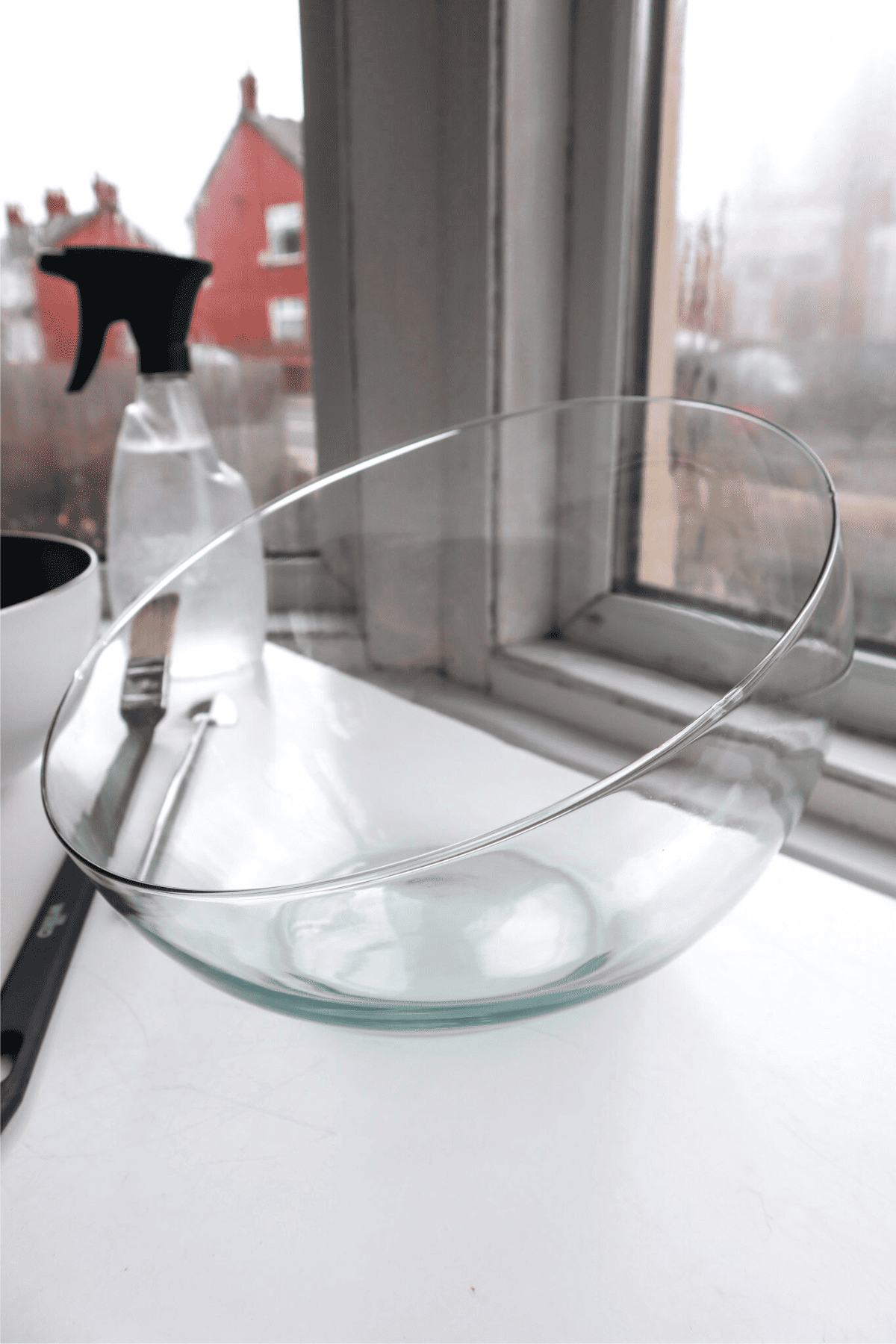
Stay away from any sealed containers or jars. Even the likes of deep open-topped vases or those with narrow openings will still trap too much humidity.
False Bottom Drainage Layer
While a drainage layer isn’t crucial for all projects, it certainly is for a cacti terrarium.
A false bottom (as it’s otherwise known) provides a space where any excess water can drain out of reach of the plant’s roots.
Perfect watering is – as it sounds – extremely difficult, and it’s all too easy to ruin your lovely cacti by being a little heavy-handed.
It’s absolutely essential that the water is not able to wick up to the roots, so a layer of lava rock or LECA will provide a small buffer. I use both regularly.
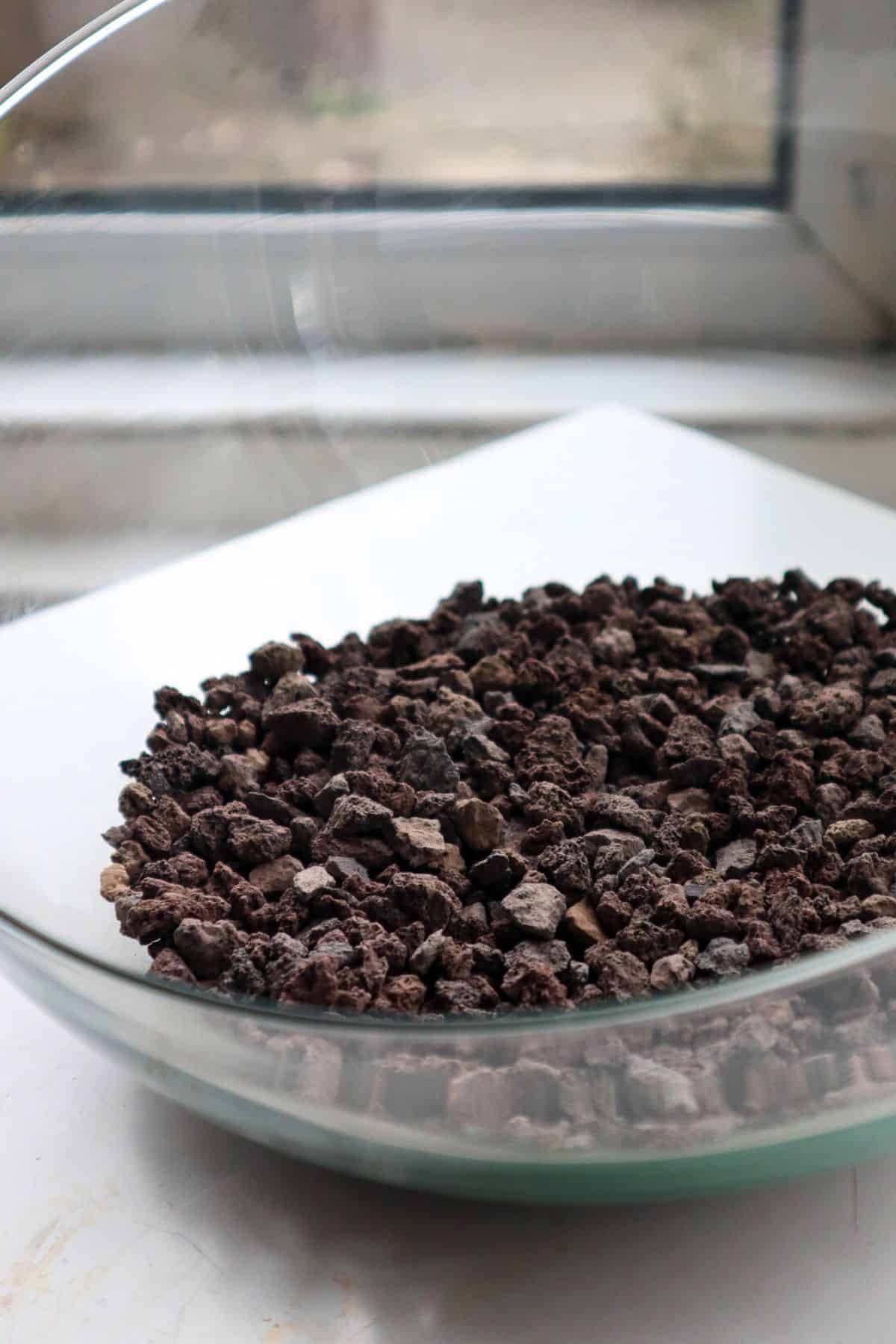
While I generally don’t bother with a mesh for closed terrariums, I highly recommend it for builds with cacti.
👉 We sell a substrate mesh barrier cut to various convenient sizes.
Cactus Terrarium Soil
Any old substrate isn’t going to cut it here.
Cacti need more drainage and root aeration than most, and your substrate choice is essential in providing that.
“Cactus mixes” come in two main varieties: grit-only and gritty soil-based.
- The grit-only mixes are primarily comprised of volcanic rocks and clay pebbles, with no typical substrate bases (e.g., coco fiber).
This kind of rocky mix provides lots of space for root aeration, and it both drains and dries out in record time, so there’s not much opportunity for root rot to develop. On the flip side, you’re going to need to water your cactus terrarium a lot more often.

- On the other hand, gritty soil-based mixes are often a typical mix of substrate ingredients but with a much higher percentage of supplements that increase drainage, e.g., perlite rocks, sand, pumice, or orchid bark chunks.
Ratios and ingredients can vary dramatically; always check the label, as some of these can be really poorly suited, in my experience. Stay clear of anything not explicitly for cacti or anything that contains sphagnum moss (it retains far too much water).
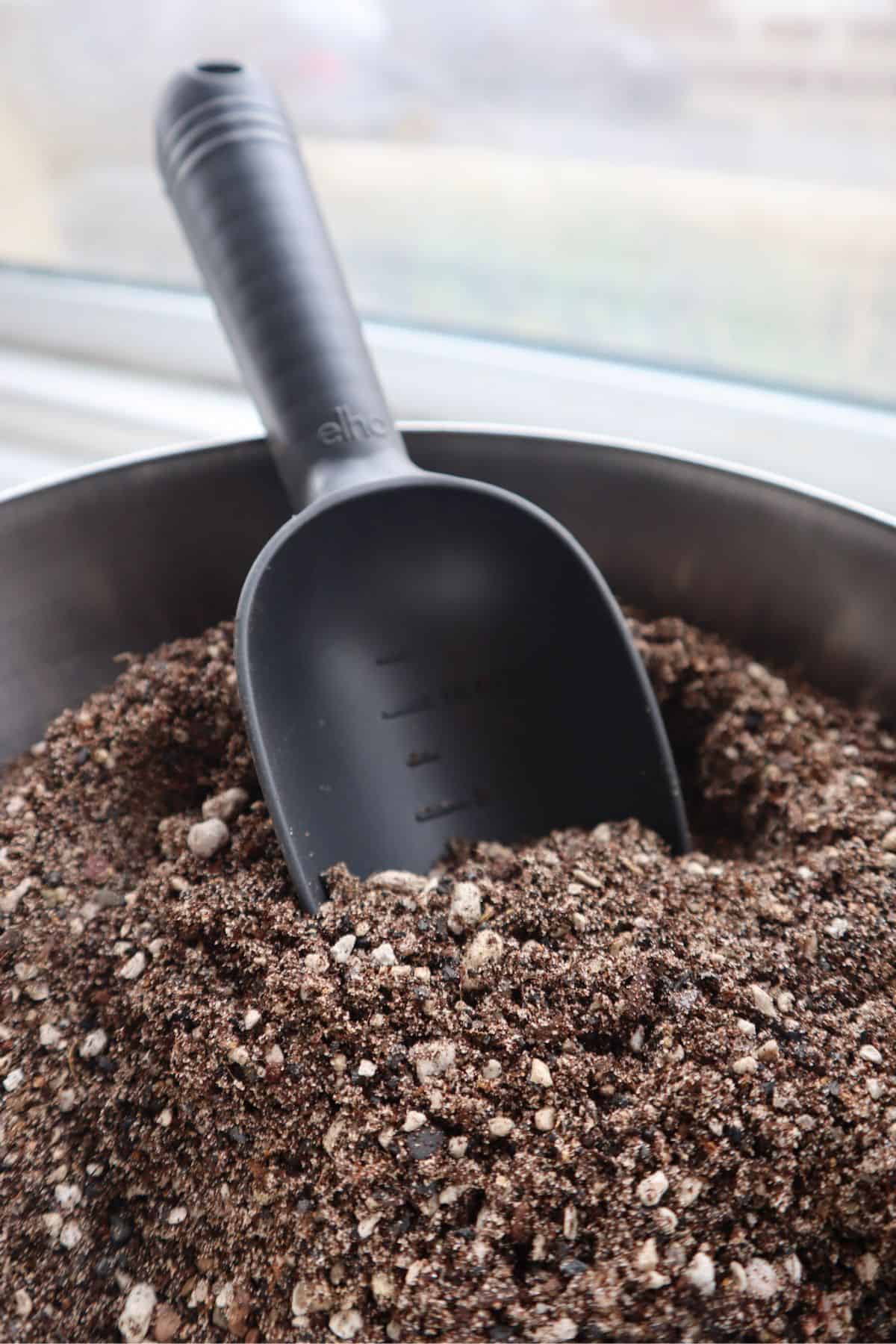
👉 Shop the range of cacti mixes on Etsy.
Suitable Terrarium Cactus Plants
Unsurprisingly, cacti don’t really have a distinctive list of terrarium-suitable species.
But the great thing about cacti is that, on the whole, they have the same care requirements. So you can’t really go too wrong with pairing them together.
While some species can grow large, I find they grow relatively slowly. And unlike closed terrarium ecosystems, it’s very easy to access and re-pot an open cactus terrarium at some point over the years.
So, you can get away with planting a variety of (potentially larger) species.
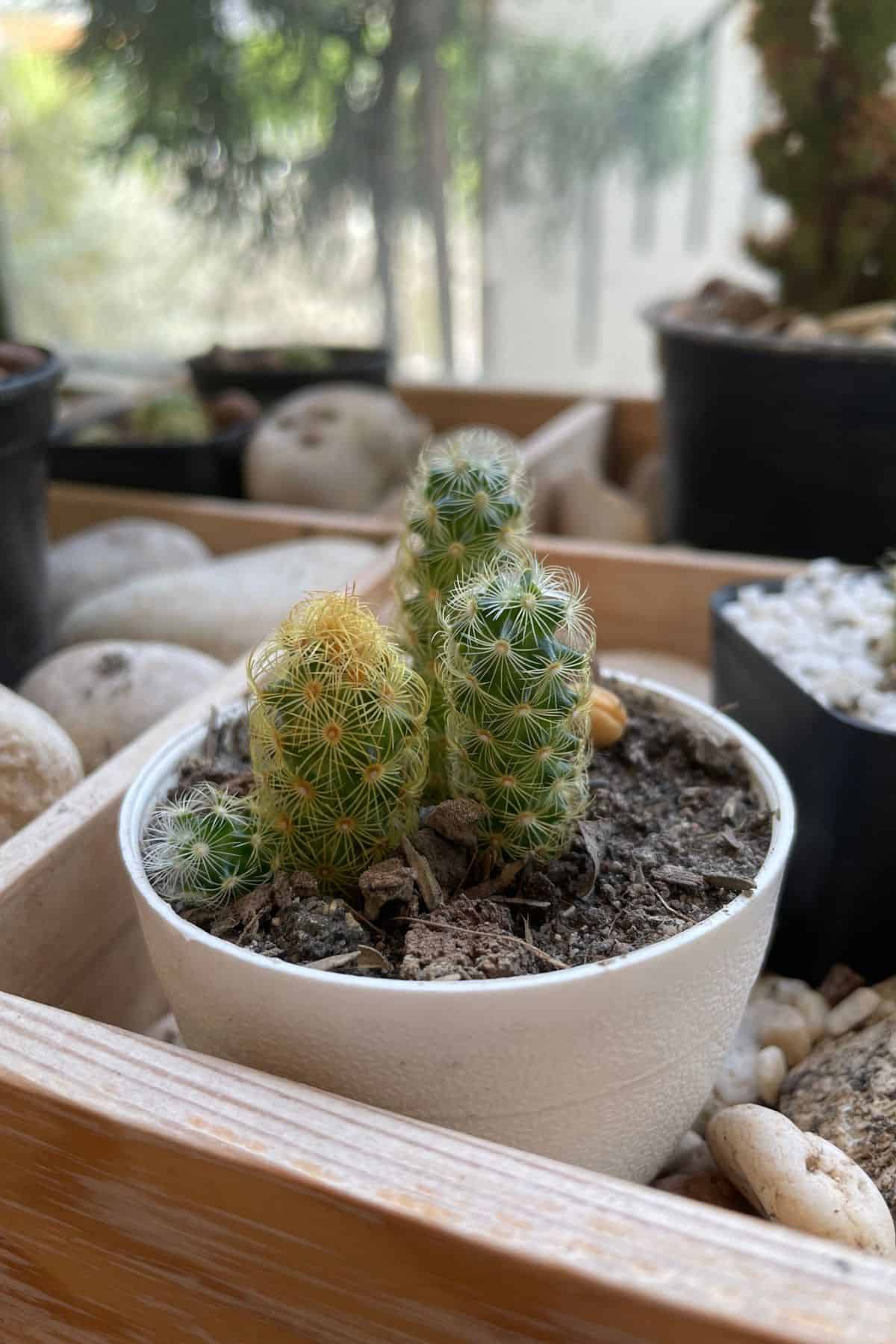
👉 Shop small cactus plants on Etsy (you can grab them in sets of 3+ to save cash).
Small Terrarium Cacti
That being said, if you’re looking for a great small cactus for terrariums that are going to stay small, here are some true miniature varieties.
- Mammillaria rhodantha (Rainbow Pincushion)
- Opuntia rufida ‘Minima’ (Cinnamon Cactus)

- Echinopsis chamaecereus (Peanut Cactus)
- Mammillaria gracilis (Thimble Mammillaria)
- Echinopsis subdenudata (Domino Cactus)
Other Cacti Terrarium Plants
And you don’t need to exclusively use cacti.
While bringing tropical plants into the arrangement is off the cards, other arid plants are certainly welcome to join the cacti party.
Why not throw a cheeky succulent into the mix to spice things up?
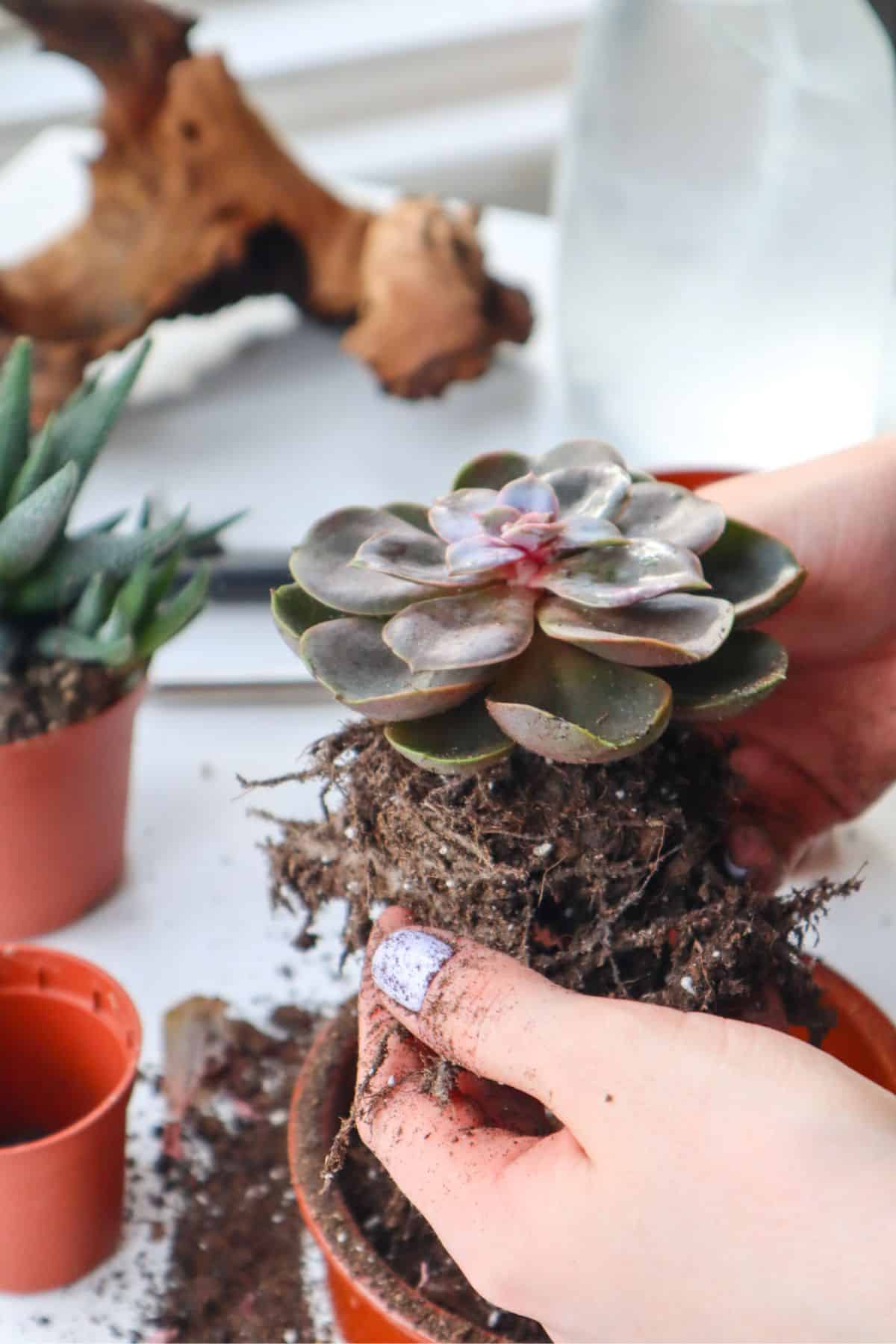
👉 Shop succulents on Etsy, or see our Succulents for Terrariums Guide for more.
Cactus Terrarium DIY Tips
Ready to throw it all together? Here are some of my top design tips.
- Use a piece of hardscape to add a natural element and texture to a piece.
- To make your landscape more dynamic, sculpt your substrate so it isn’t flat.
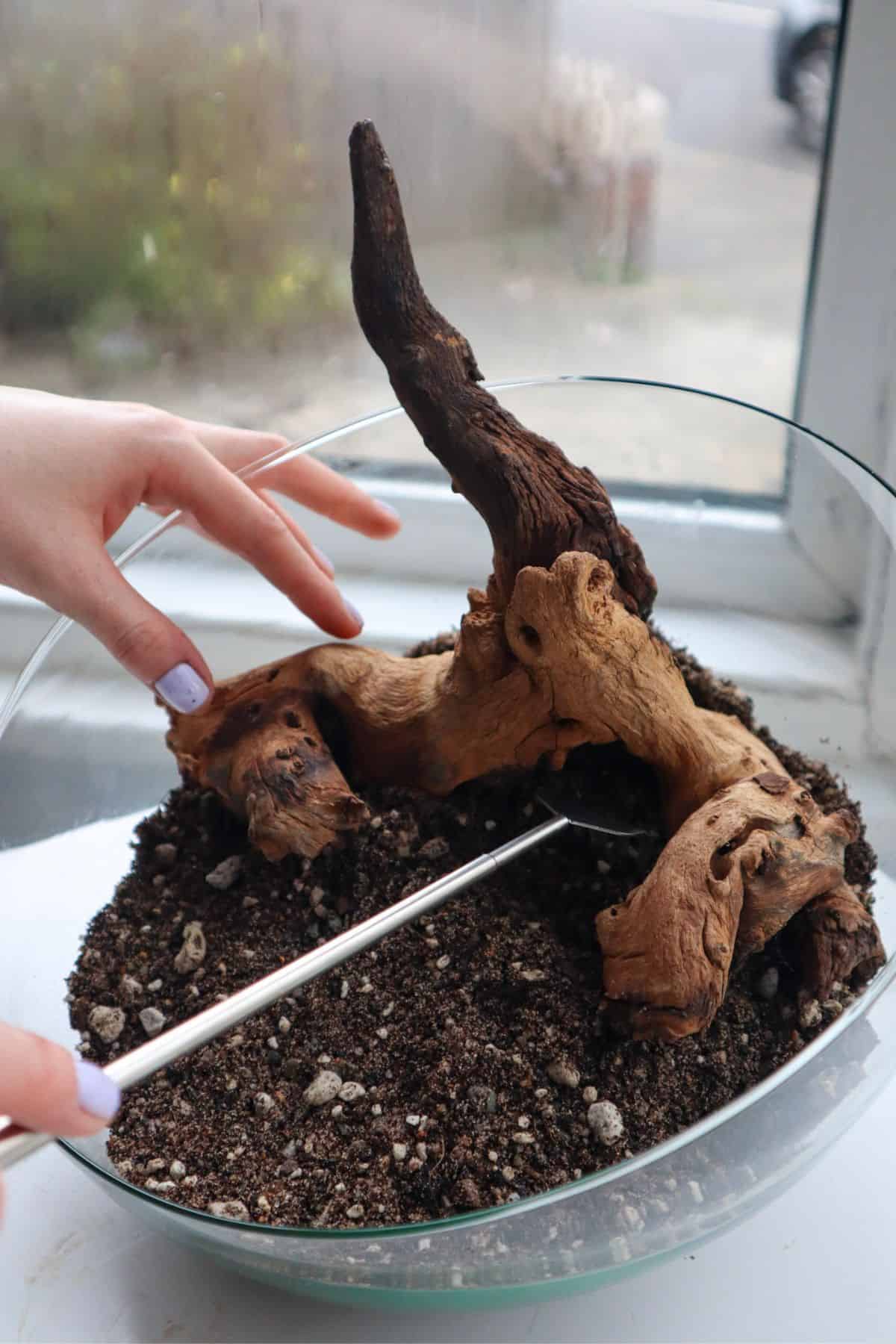
- Ever seen a vase with four flowers in it? To avoid the result looking odd, use an odd number of plants.
- Sprinkle some sand or orchid bark on any exposed substrate to make it pop.
- Use different colored cacti for maximum visual effect.
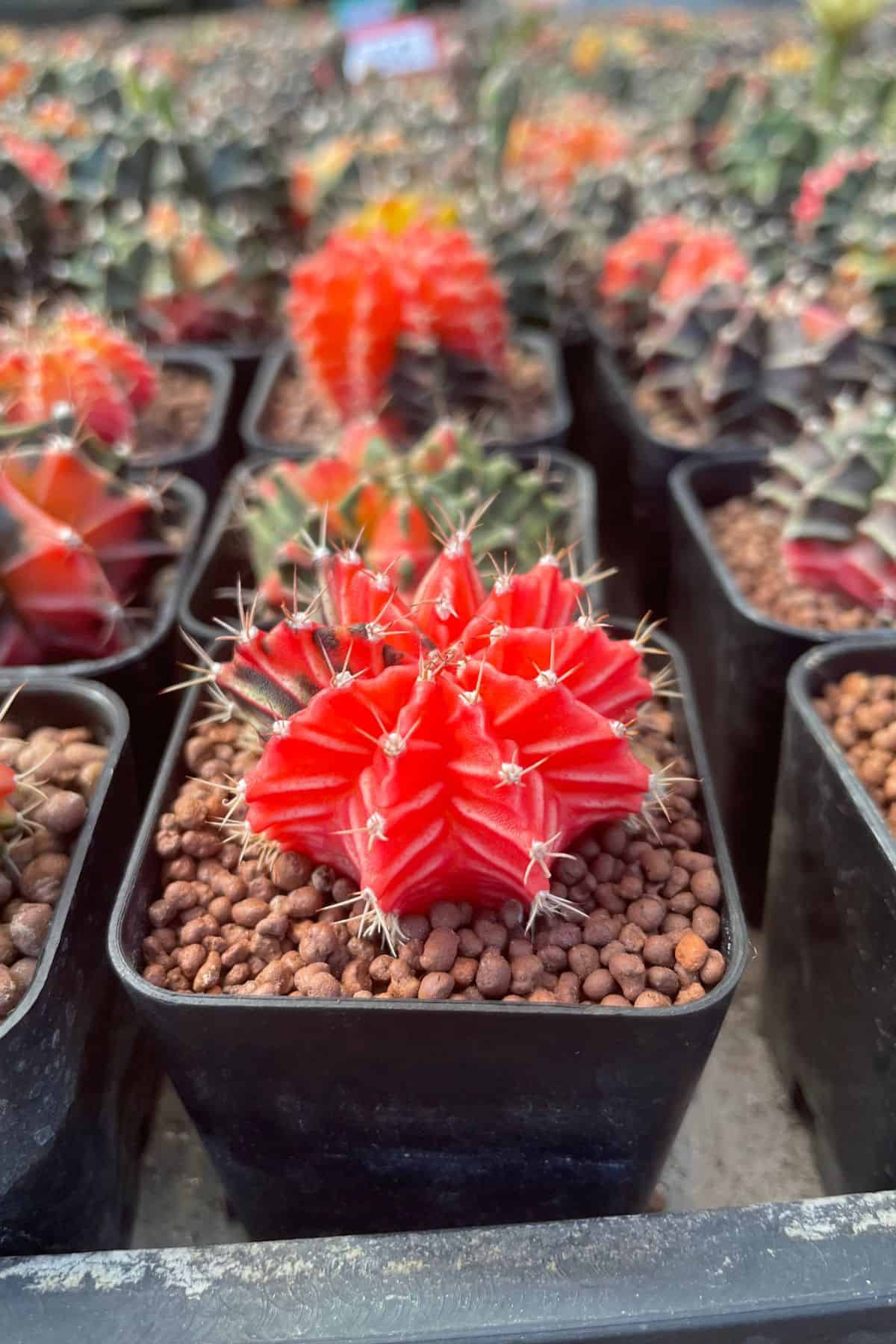
Cactus Terrarium Care
Caring for a cactus terrarium is very different from a tropical one.
On one hand, you have no delicate ecosystem to balance so it’s a lot more straightforward, but you also have no self-watering mechanism either.
It’s much more akin to watering your potted plants than a typical terrarium.
How to Water a Cactus Terrarium
The aim of the game is simply to provide sufficient water whilst never allowing the cacti to sit in a saturated substrate.
After all, cacti do like regular water.
They’re just used to it draining and evaporating off super fast, as it would in the desert. The better you can replicate that, the better they’ll do.
Try giving it a spray down a few times per month and adjust accordingly. Less is more. Think of them as just a little top-up, never enough to completely saturate the substrate or fill the false bottom.
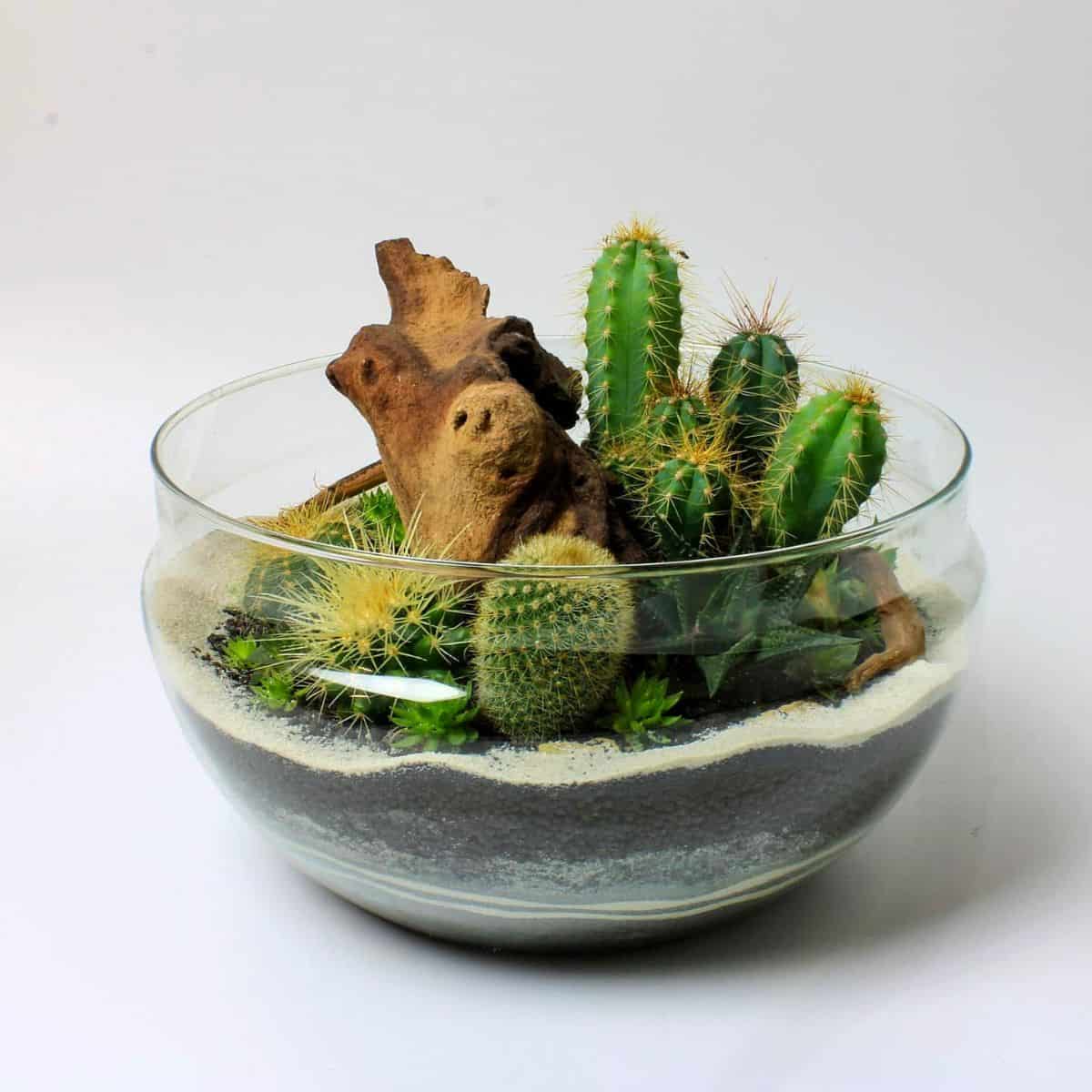
Cactus Terrarium Lighting
Cacti generally enjoy their fair share of bright light, so a spot on a West or South-Facing windowsill will do the job nicely.

Or, if the prime real estate in your home is all used up, you can pop your cactus terrarium in a darker spot and boost it with a grow light.
*It’s still worth double-checking the preferences of the specific plants you’ve used.
Over to You
Have you managed to keep a cactus terrarium healthy and happy for a long time?
Let us know your spiky secrets in the comments!

What kind of water does a Dan prefer? Filtered? De-mineralized? Pilsner? 😉
Thanks for the info, I’m planting a couple of small cacti/succulents in a large open vase. Small river rock base, Spanish moss substrate, orchid-type planter soil mixed with a bit of unscented plain clay litter? Because I don’t have sand…very experimental.
We shall see how it does.
Definitely the latter 😂 Clay works in terrariums in a variety of ways, I’m sure it’ll help in yours!
2 cacti and a succulent grown from very small plants in a geometric planter with one side open, for the last 4 years. Charcoal base layer, fine gritty soil layer finished with small white quartz chips and pebbles.
Just taken it apart and placed each plant in a separate pot of cacti mix using a good amount of the quartz chips mixed in.
Will leave to settle for 2 weeks before watering and then feed a week or 2 after that. Fingers crossed.
Going to start again with the same open terrarium and cacti and succulents, maybe of different colours.